
-
 Boeing defense workers launch strike over contract dispute
Boeing defense workers launch strike over contract dispute
-
Grand Canyon fire rages, one month on

-
 Djokovic withdraws from ATP Cincinnati Masters
Djokovic withdraws from ATP Cincinnati Masters
-
Brazil's Paixao promises 'big things' at Marseille unveiling

-
 Shubman Gill: India's elegant captain
Shubman Gill: India's elegant captain
-
Trump says to name new labor statistics chief this week

-
 England v India: Three talking points
England v India: Three talking points
-
Exceptional Nordic heatwave stumps tourists seeking shade

-
 'Musical cocoon': Polish mountain town hosts Chopin fest
'Musical cocoon': Polish mountain town hosts Chopin fest
-
A 'Thinker' drowns in plastic garbage as UN treaty talks open

-
 India's Siraj 'woke up believing' ahead of Test heroics
India's Siraj 'woke up believing' ahead of Test heroics
-
Israeli PM says to brief army on Gaza war plan

-
 Frustrated Stokes refuses to blame Brook for England collapse
Frustrated Stokes refuses to blame Brook for England collapse
-
Moscow awaits 'important' Trump envoy visit before sanctions deadline

-
 Schick extends Bayer Leverkusen contract until 2030
Schick extends Bayer Leverkusen contract until 2030
-
Tesla approves $29 bn in shares to Musk as court case rumbles on

-
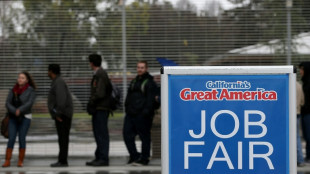 Stocks rebound on US rate cut bets
Stocks rebound on US rate cut bets
-
Swiss eye 'more attractive' offer for Trump after tariff shock

-
 Trump says will name new economics data official this week
Trump says will name new economics data official this week
-
Three things we learned from the Hungarian Grand Prix

-
 Lions hooker Sheehan banned over Lynagh incident
Lions hooker Sheehan banned over Lynagh incident
-
Jordan sees tourism slump over Gaza war

-
 China's Baidu to deploy robotaxis on rideshare app Lyft
China's Baidu to deploy robotaxis on rideshare app Lyft
-
Israel wants world attention on hostages held in Gaza

-
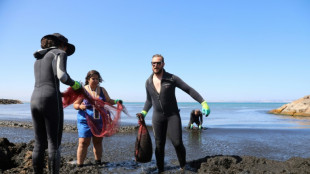 Pacific algae invade Algeria beaches, pushing humans and fish away
Pacific algae invade Algeria beaches, pushing humans and fish away
-
Siraj stars as India beat England by six runs in fifth-Test thriller

-
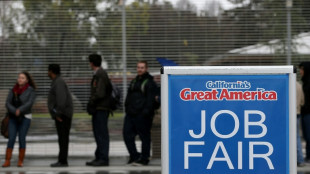 Stocks mostly rise as traders boost US rate cut bets
Stocks mostly rise as traders boost US rate cut bets
-
S.Africa eyes new markets after US tariffs: president

-
 Trump envoy's visit will be 'important', Moscow says
Trump envoy's visit will be 'important', Moscow says
-
BP makes largest oil, gas discovery in 25 years off Brazil

-
 South Korea removing loudspeakers on border with North
South Korea removing loudspeakers on border with North
-
Italy fines fast-fashion giant Shein for 'green' claims

-
 Shares in UK banks jump after car loan court ruling
Shares in UK banks jump after car loan court ruling
-
Beijing issues new storm warning after deadly floods

-
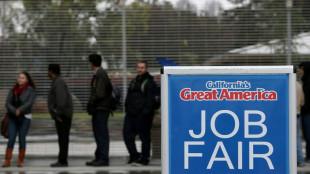 Most markets rise as traders US data boosts rate cut bets
Most markets rise as traders US data boosts rate cut bets
-
17 heat records broken in Japan

-
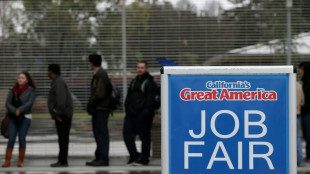 Most markets rise as traders weigh tariffs, US jobs
Most markets rise as traders weigh tariffs, US jobs
-
Tycoon who brought F1 to Singapore pleads guilty in graft case

-
 Australian police charge Chinese national with 'foreign interference'
Australian police charge Chinese national with 'foreign interference'
-
Torrential rain in Taiwan kills four over past week

-
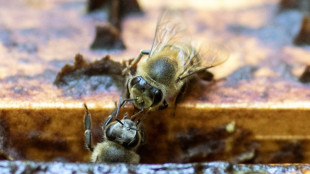 Rwanda bees being wiped out by pesticides
Rwanda bees being wiped out by pesticides
-
Tourism boom sparks backlash in historic heart of Athens

-
 Doctors fight vaccine mistrust as Romania hit by measles outbreak
Doctors fight vaccine mistrust as Romania hit by measles outbreak
-
Fritz fights through to reach ATP Toronto Masters quarters

-
 Trump confirms US envoy Witkoff to travel to Russia in coming week
Trump confirms US envoy Witkoff to travel to Russia in coming week
-
Mighty Atom: how the A-bombs shaped Japanese arts

-
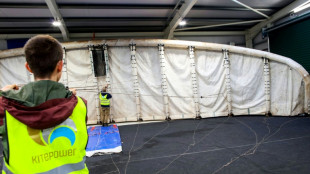 'Let's go fly a kite': Capturing wind for clean energy in Ireland
'Let's go fly a kite': Capturing wind for clean energy in Ireland
-
Pakistan beat West Indies by 13 runs to capture T20 series

-
 80 years on, Korean survivors of WWII atomic bombs still suffer
80 years on, Korean survivors of WWII atomic bombs still suffer
-
Teenage kicks: McIntosh, 12-year-old Yu set to rule the pool at LA 2028

| RBGPF | 0.08% | 75 | $ | |
| SCU | 0% | 12.72 | $ | |
| CMSC | 0.87% | 23.07 | $ | |
| BCE | -1.12% | 23.31 | $ | |
| BCC | -0.77% | 82.71 | $ | |
| GSK | 0.32% | 37.68 | $ | |
| CMSD | 1.18% | 23.63 | $ | |
| SCS | 38.6% | 16.58 | $ | |
| RYCEF | 2.07% | 14.5 | $ | |
| RIO | 0.58% | 60 | $ | |
| RELX | 0.73% | 51.97 | $ | |
| VOD | 0.72% | 11.04 | $ | |
| AZN | 0.86% | 74.59 | $ | |
| JRI | 0.76% | 13.2 | $ | |
| BP | 2.28% | 32.49 | $ | |
| BTI | 2.16% | 55.55 | $ | |
| NGG | 1.14% | 72.65 | $ |

Science Center for Marine Fisheries Approves Additional $218,000 in Finfish and Shellfish Research
OCEAN SPRINGS, MS / ACCESS Newswire / July 14, 2025 / At its annual spring meeting, the Science Center for Marine Fisheries (SCEMFIS) approved $218,531 in funding for new finfish and shellfish research projects. These new projects are in addition to the $277,000 in research funding that the Center approved at the start of the year and continue the Center's commitment to identifying and supporting groundbreaking finfish and shellfish research.
SCEMFIS, part of the National Science Foundation's Industry/University Cooperative Research Center program, is a collaborative project between the fishing industry and leading finfish and shellfish researchers. The projects funded by SCEMFIS at their biannual meetings have been identified by the Center's fishing industry partners as improving both our understanding of these species, and the sustainable management of the fisheries that depend on them.
Additional projects funded for 2025 include developing new ways to model and predict the varying growth of surfclam populations; improving the current assessment model used for shortfin squid; using computer modeling to more quickly and efficiently age surfclams; providing a complete picture of the mineral and nutritional profile of Atlantic surfclams and ocean quahogs; and determining to what extent predator and prey species abundance affect each other in the Gulf of America.
The following new research projects were funded by SCEMFIS:
Development of a model for the prediction of the temporal and geographic variability in Atlantic surfclam growth:
Atlantic surfclams vary greatly in size across regions and over time. This variability has traditionally presented challenges for fisheries management, which imposes size-based fishing limits to control harvests. As a result, being able to predict this variability more accurately has been identified as one of the best ways to improve surfclam management. This project, by Dr. Eric Powell of the University of Southern Mississippi, will build on previously funded SCEMFIS surfclam projects that studied surf clam growth; the project will use temperature and other data that strongly correlate with surfclam growth, combined with other growth data, as part of a model that will be used to estimate growth rates across regions. ($48,890 in funding)Advancement of a new approach for assessing shortfin squid:
Shortfin squid is a commercially important fish stock that supports a critical fishery. Despite this, there has not been a stock assessment of the species that has passed peer review. Fisheries managers have had a difficult time determining the stock status due to an inability to estimate factors such as fishing mortality, biomass, and ecological reference points. This project, from Drs. Michael Wilberg and Geneviève Nesslage of the University of Maryland Center for Environmental Science, will analyze and refine available shortfin squid data that has been collected from fishery and non-fishery sources, and examine factors such as life history, catch distribution, and catch per unit of effort. The refined data will be prepared for use in the model eventually used for the shortfin squid assessment. ($55,629 in funding)Employing computer vision in clam age estimation:
SCEMFIS has supported several significant shellfish research projects, particularly projects that have provided better understanding of the age structure of ocean quahog. These projects have helped improve the management of the fishery and confirmed the overall sustainability of the resource. In advance of the upcoming stock assessment, a representative sample of 800 quahogs will need to be aged for use in the assessment model. Traditionally a time- and labor-intensive task, this project, from Drs. Roger Mann and Miranda Lv at the Virginia Institute for Marine Sciences, will use a computer vision model to more quickly and accurately age shellfish samples of both surfclams and ocean quahogs. The model will be trained on existing images of already-aged clams, which will then be used in an algorithm to age future shellfish samples. ($27,869 in funding)Comprehensive Analysis of Iodine and Essential Mineral Content in Mid-Atlantic Clam Products:
This project, conducted by Dr. Stella Volpe of Virginia Tech, will conduct an essential mineral content analysis of Atlantic surfclams and ocean quahogs, building a nutritional profile of minerals such as iodine, zinc, selenium, copper, iron, and magnesium. This is important both to promote the nutritional value of surfclams and quahogs, and because these minerals are often lacking in the average American diet, with some groups, like pregnant women, at particular risk for deficiencies such as iodine. The project will collect representative samples of Atlantic surfclams and ocean quahogs from across the Atlantic coast, categorize them according to factors such as origins, size, and other variables, and use mass spectrometry to get a full breakdown of the mineral profile of the samples. ($45,000 in funding)Data-driven inference of population dynamics of recreationally-targeted stocks in the GOA:
The populations of both predator and prey species are influenced by the extent and the dynamics of how they interact. This project, from Dr. Robert Leaf at the University of Southern Mississippi, will develop a model to determine to what extent prey abundance is responsible for predator abundance in the northern portion of the Gulf of America. The model will focus specifically on the dynamics between commercially important predator and prey species, such as red drum, spotted sea trout, and Gulf menhaden. The model will include environmental and biological data, and will analyze variables such as harvest levels, the relative abundance of each species, weight, and other environmental factors in determining the extent of the relationship between the predator and prey species. ($41,143 in funding)
About SCEMFIS
SCEMFIS utilizes academic and fisheries resources to address urgent scientific problems limiting sustainable fisheries. SCEMFIS develops methods, analytical and survey tools, datasets, and analytical approaches to improve sustainability of fisheries and reduce uncertainty in biomass estimates. SCEMFIS university partners, University of Southern Mississippi (lead institution), and Virginia Institute of Marine Science, College of William and Mary, are the academic sites. Collaborating scientists who provide specific expertise in finfish, shellfish, and marine mammal research, come from a wide range of academic institutions including Old Dominion University, Rutgers University, University of Massachusetts-Dartmouth, University of Maryland, and University of Rhode Island.
The need for the diverse services that SCEMFIS can provide to industry continues to grow, which has prompted a steady increase in the number of fishing industry partners. These services include immediate access to science expertise for stock assessment issues, rapid response to research priorities, and representation on stock assessment working groups. Targeted research leads to improvements in data collection, survey design, analytical tools, assessment models, and other needs to reduce uncertainty in stock status and improve reference point goals.
PRESS CONTACT:
Stove Boat Communications
202-595-1212
[email protected]
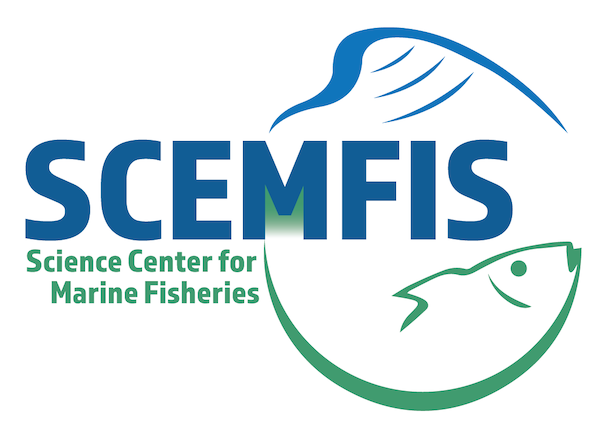
SOURCE: Science Center for Marine Fisheries
View the original press release on ACCESS Newswire
Y.Aukaiv--AMWN